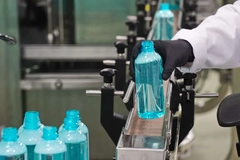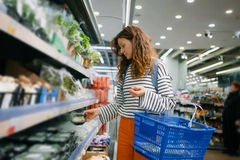ChemSec: European Commission could “water down” legislation and allow toxic substance integration

The European Commission (EC) has come under fire for proposing changes to its Green Taxonomy, which would allow for thousands of potentially harmful substances to enter packaging and cosmetics products under the guise of being “green.” Campaigners at ChemSec are warning the EC’s latest proposals could derail the European investment market for sustainable products.
The EU’s Green Taxonomy specifies which investments can be classified as sustainable.
The respective substances include galaxolide, a hormone disruptor used in cosmetics and fragrances, and n-butyl benzenesulfonamide (NBBS), a high-volume commercial plastic softener that is neurotoxic and has been found to induce spastic myelopathy in rabbits, warns the non-profit organization.
ChemSec warns that the small print of the draft legislation contains proposals to allow “thousands of substances” to be categorized as “sustainable” despite concerns over their health effects.
“Proposals to water down European legislation will allow major investments to be labeled green and sustainable, even though the companies they support are using toxic substances in their products,” warns ChemSec.
“This is a very complex area, which makes the consultation period (which ends on March 26) ridiculously short. The EC is keen to push this through with as little consultation as possible,” David Crouch, senior communications officer at ChemSec, tells Packaging Insights.
 Toxic substance emission can occur during packaging manufacture, in the use phase, and at the end of life, says Holmquist.Potential health risks
Toxic substance emission can occur during packaging manufacture, in the use phase, and at the end of life, says Holmquist.Potential health risks
Hanna Holmquist, senior toxicologist at ChemSec, tells us that NBBS is on ChemSec’s “SIN List of hazardous chemicals” because it is “very persistent and very mobile.”
Plasticizers such as NBBS are commonly used to convert PVC, a rigid plastic, into a soft, flexible, and elastic material.
“That means that there might not be a high risk for human exposure to toxic levels directly via the packaging. However, the use of the substance will lead to its emission to the environment during manufacture, in the use phase, and at the end of life. Once in the environment, NBBS will accumulate if emissions continue, and it will end up in water resources, and potentially in drink water,” explains Holmquist.
The particular substances also include TFA, a PFAS “forever chemical”, the build-up of which in drinking water across Europe is a major concern given fears that it damages the unborn child.
Destabilizing investments
The proposed changes to the Green Taxonomy legislation are part of a wider campaign to simplify Europe’s green regulations and boost growth. But the moves have encountered widespread criticism as deregulatory, with ChemSec arguing that loosening the controls on “hazardous pollution” harms human health and the environment.
Furthermore, ChemSec says that the green labeling of the toxic substances is vital for companies seeking to tap into billions of euros in investment conditional upon products meeting the EU’s sustainability criteria.
“We are talking about changes to Appendix C of the Green Taxonomy, the aim of which is to determine whether investments can be considered sustainable. There is a big pot of money at stake for companies seeking investment,” says Crouch.
“The sustainable investment market was estimated at over US$750 billion in 2024, of which around 40% went to Europe. It is a fast growing market.” ChemSec advocates for keeping Appendix C to ensure that investments that are supposed to be sustainable do not harm human health and the environment.
ChemSec advocates for keeping Appendix C to ensure that investments that are supposed to be sustainable do not harm human health and the environment.
Theresa Kjell, ChemSec’s head of policy, adds: “By loosening the controls on hazardous pollution in this way, the EC is ignoring its Green Deal pledge to do no significant harm to human health and the environment.”
“It is also destabilizing the investment environment and therefore putting economic growth at risk.”
Proposing a third option
The EC proposes two options in its draft. Option 1 would limit the scope of ineligible substances to the Candidate List of Substances of Very High Concern and Option 2 would expand the list to 1,400 additional chemicals.
While the EC proposes two options in its proposal, Crouch says: “Option 1 would delete the second part of paragraph F of Appendix C and reduce the ‘do no significant harm’ (DNSH) principle to only cover substances on the Candidate List of Substances of Very High Concern — that’s only 247 substances, the worst of the worst. This would be a drastic reduction of the scope of DNSH with respect to chemicals.”
Meanwhile, Option 2 would reduce the second part of paragraph F to substances that have “harmonized” classification under the Classification, Labelling and Packaging of Substances and Mixtures (CLP) Regulation for the hazard classes mentioned in Article 57 of REACH (currently CMR1, PBT, vPvB).
“It would no longer include substances that meet those hazard categories based on self-classification by industry but have not yet undergone harmonized classification.”
But both options keep the Candidate listed substances mentioned in the first paragraph (i).
Kjell tells us: “Our opinion is that there should have been a third option, namely, to keep Appendix C as it is.”
“This would be the preferred option to ensure that investments that are supposed to be sustainable actually do no significant harm to human health and the environment.”











